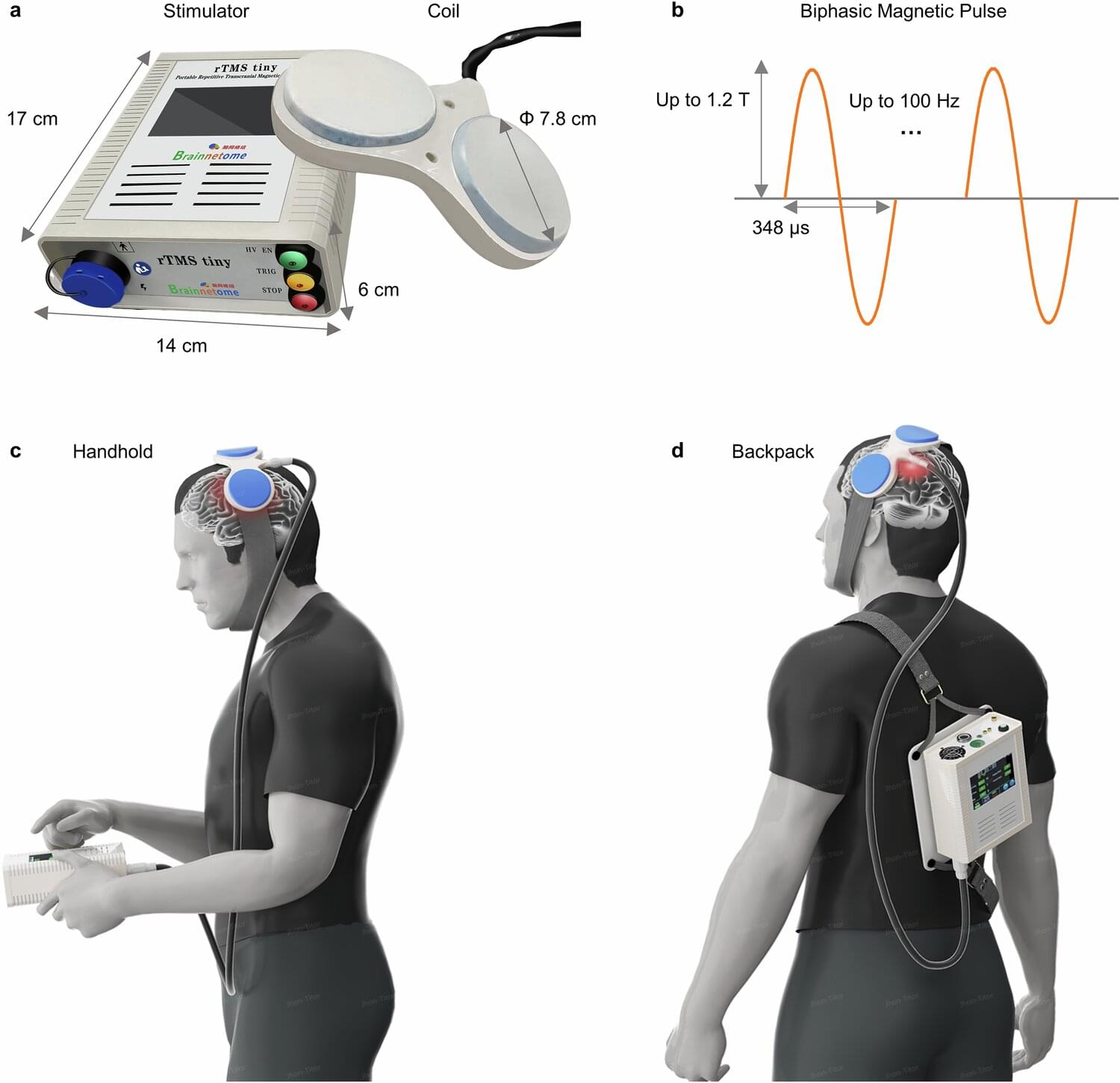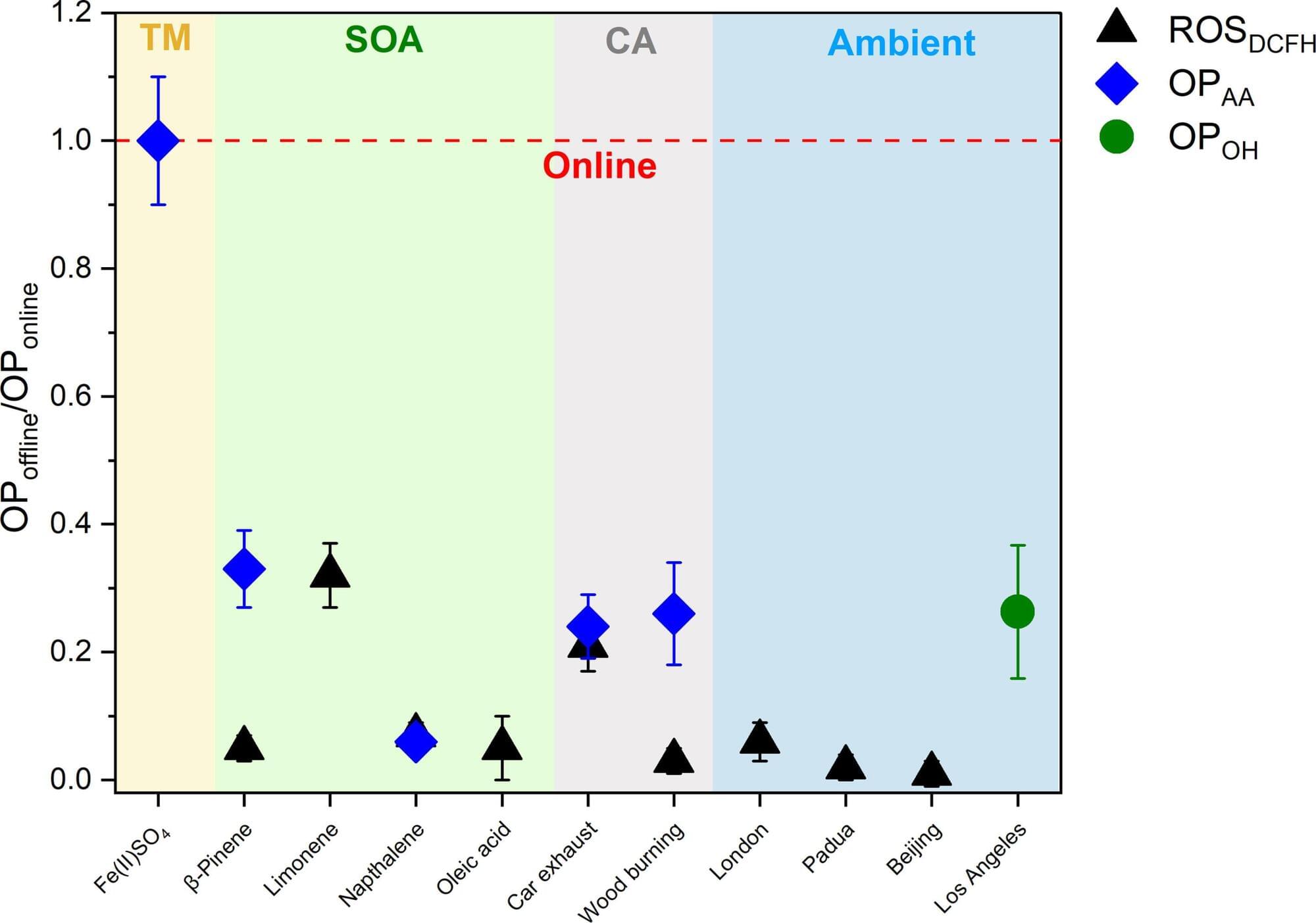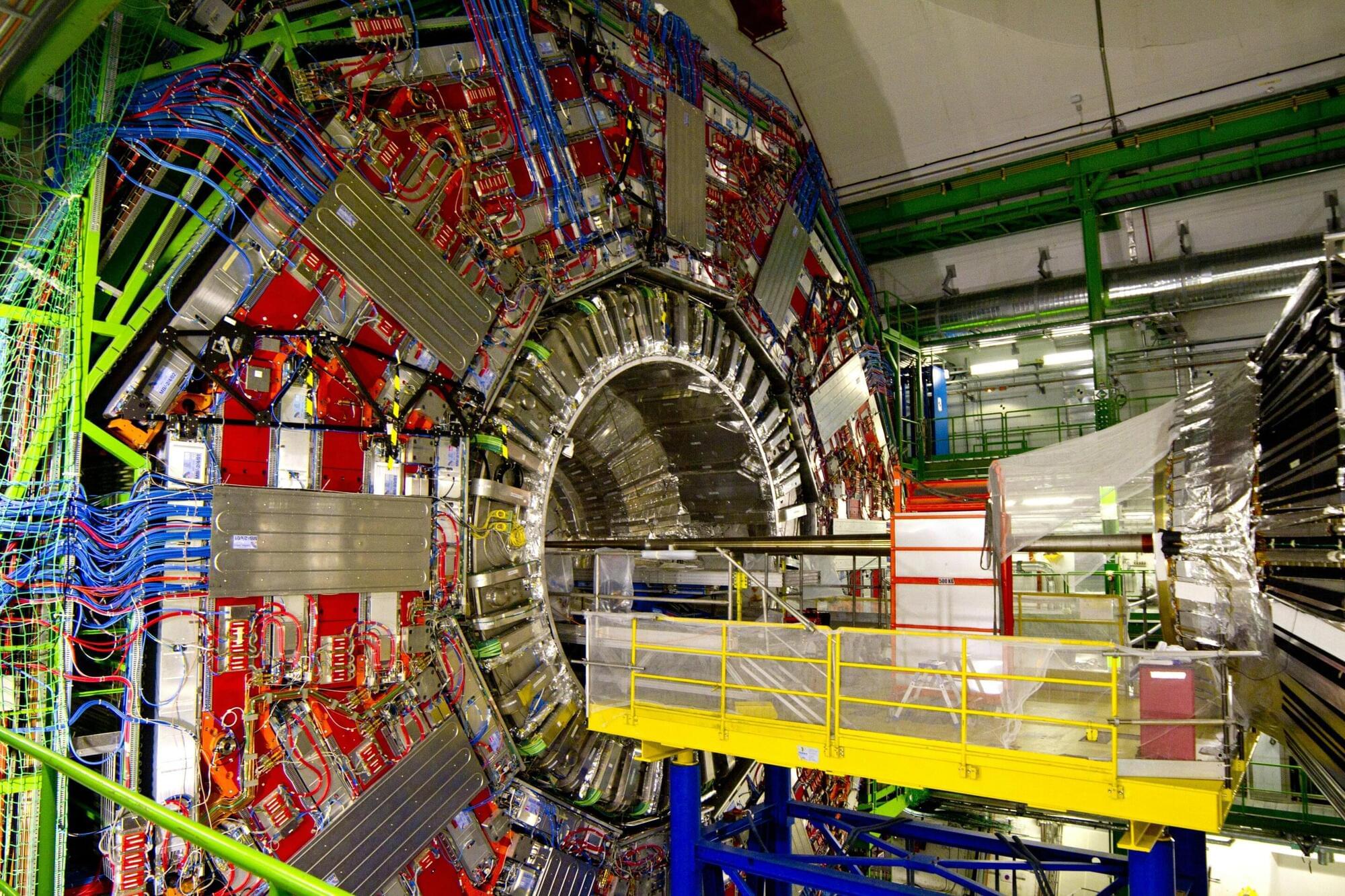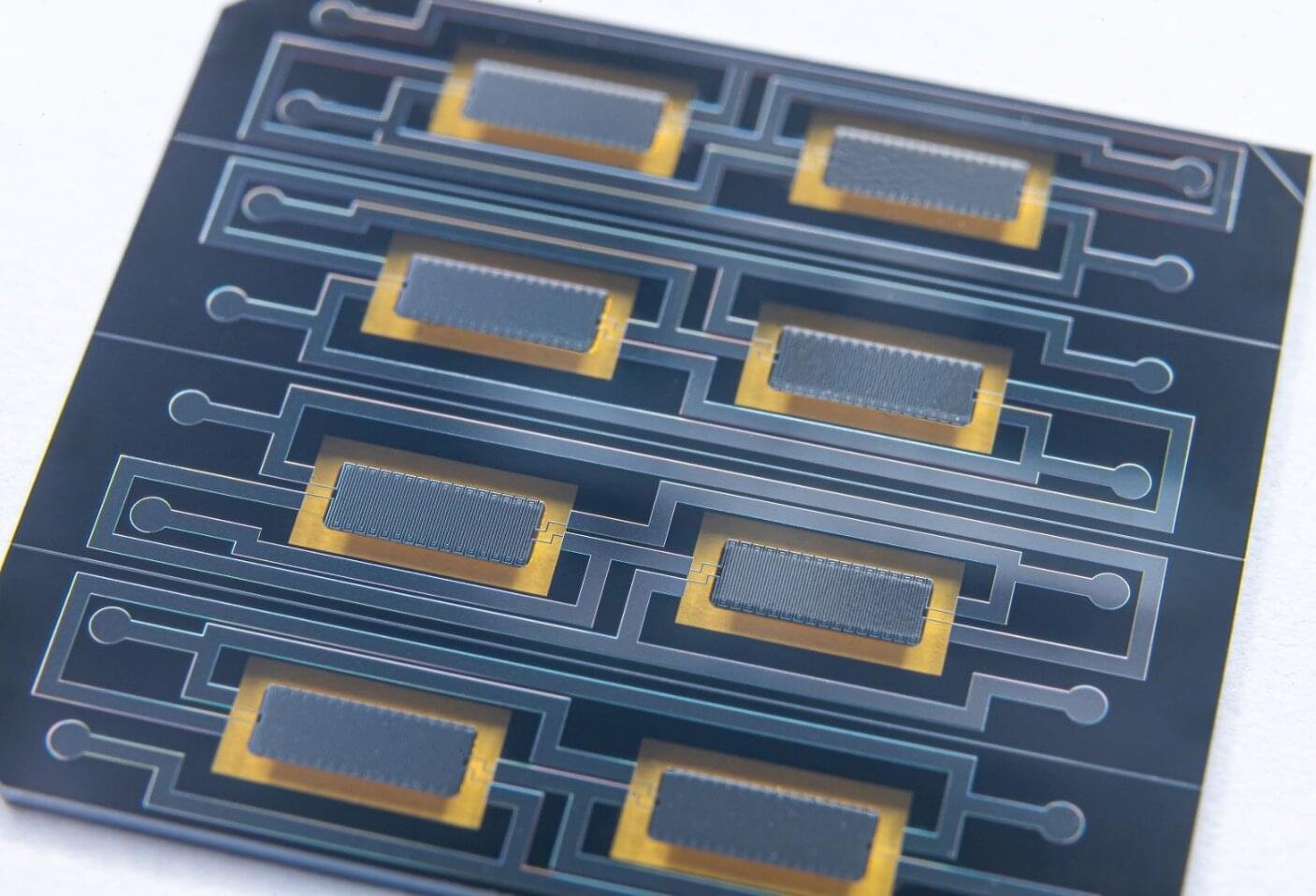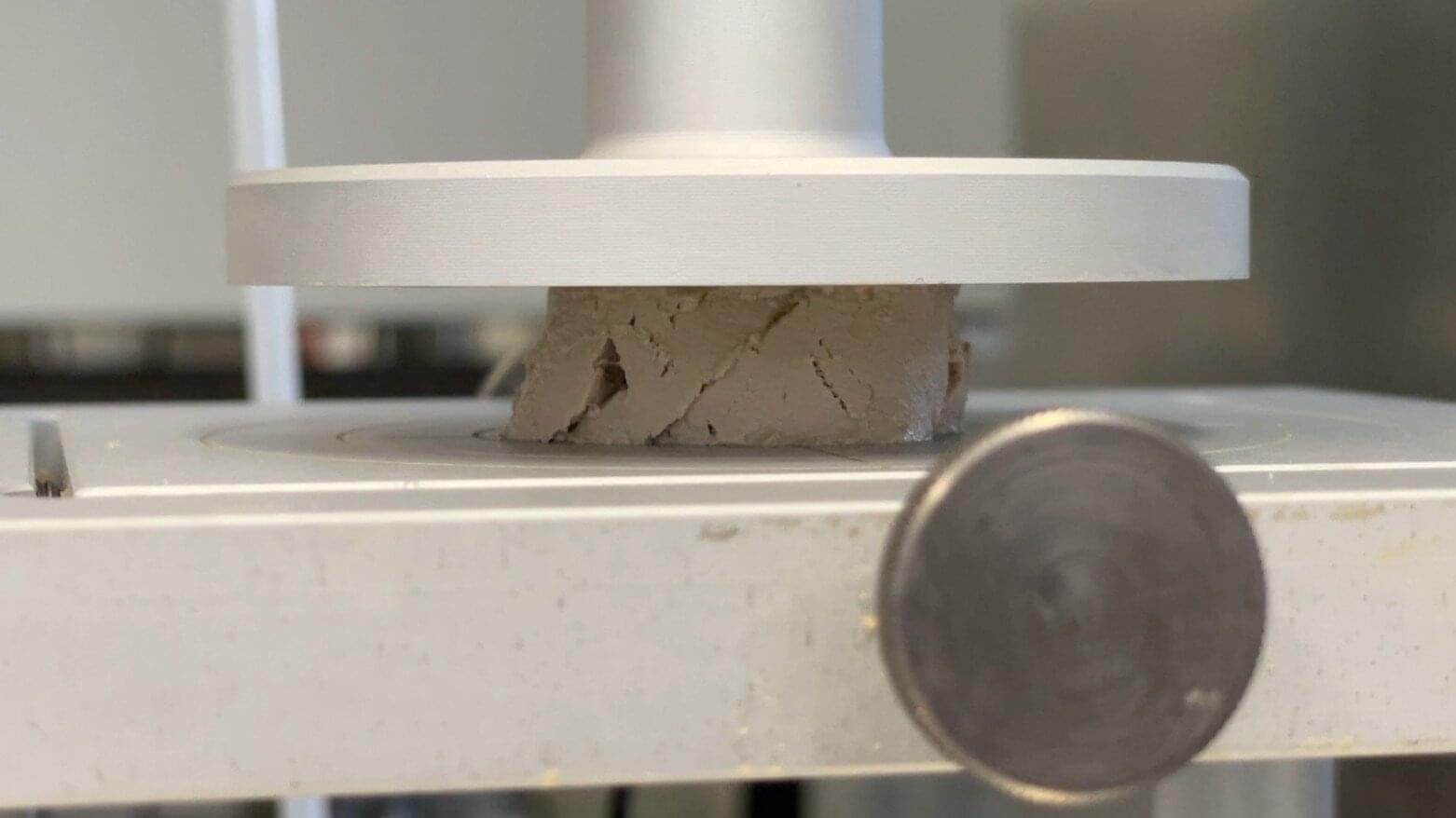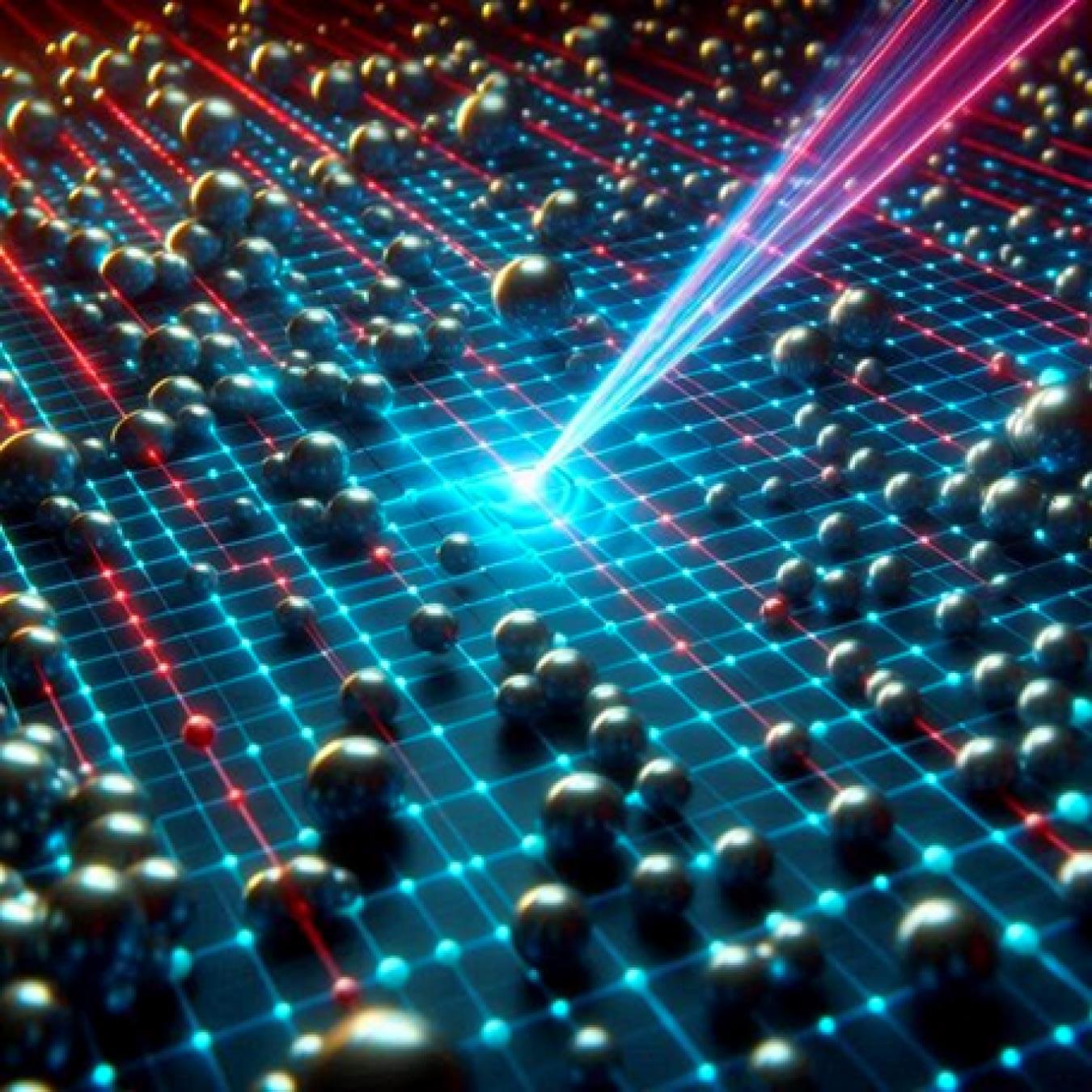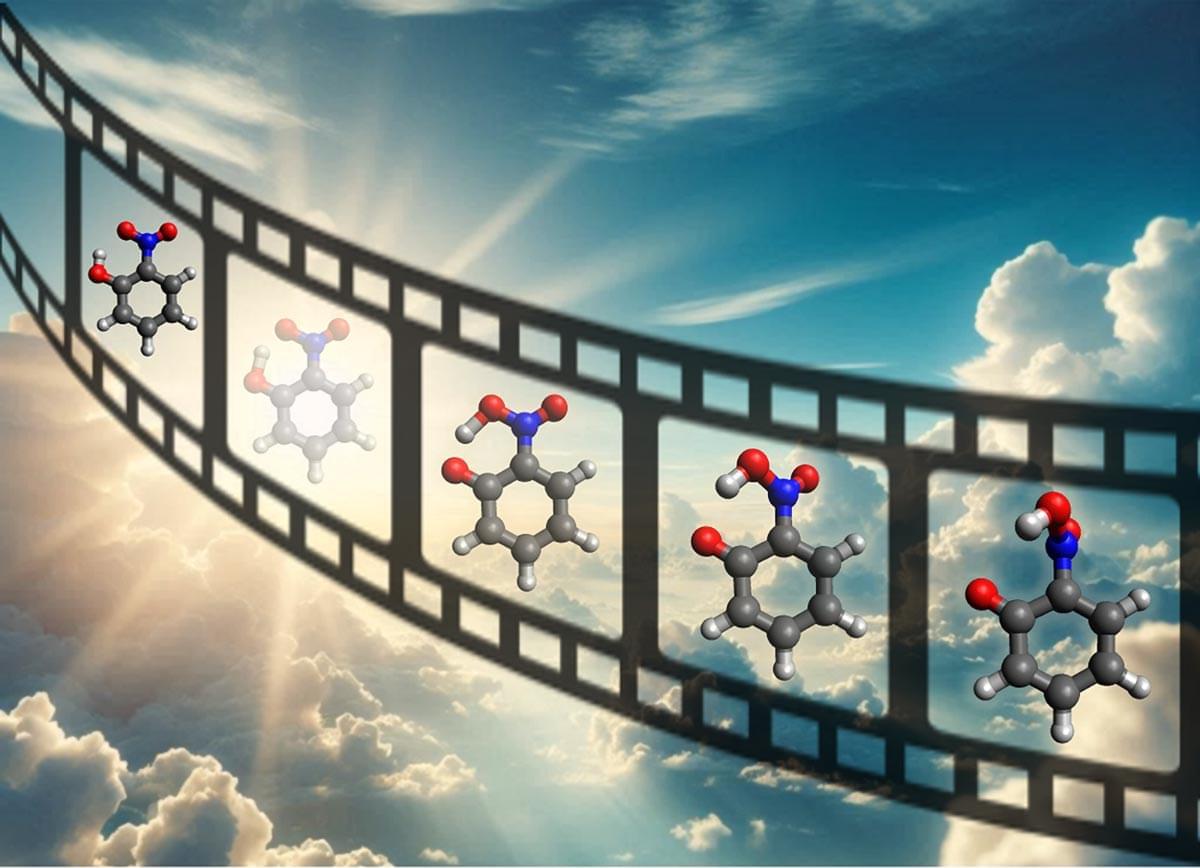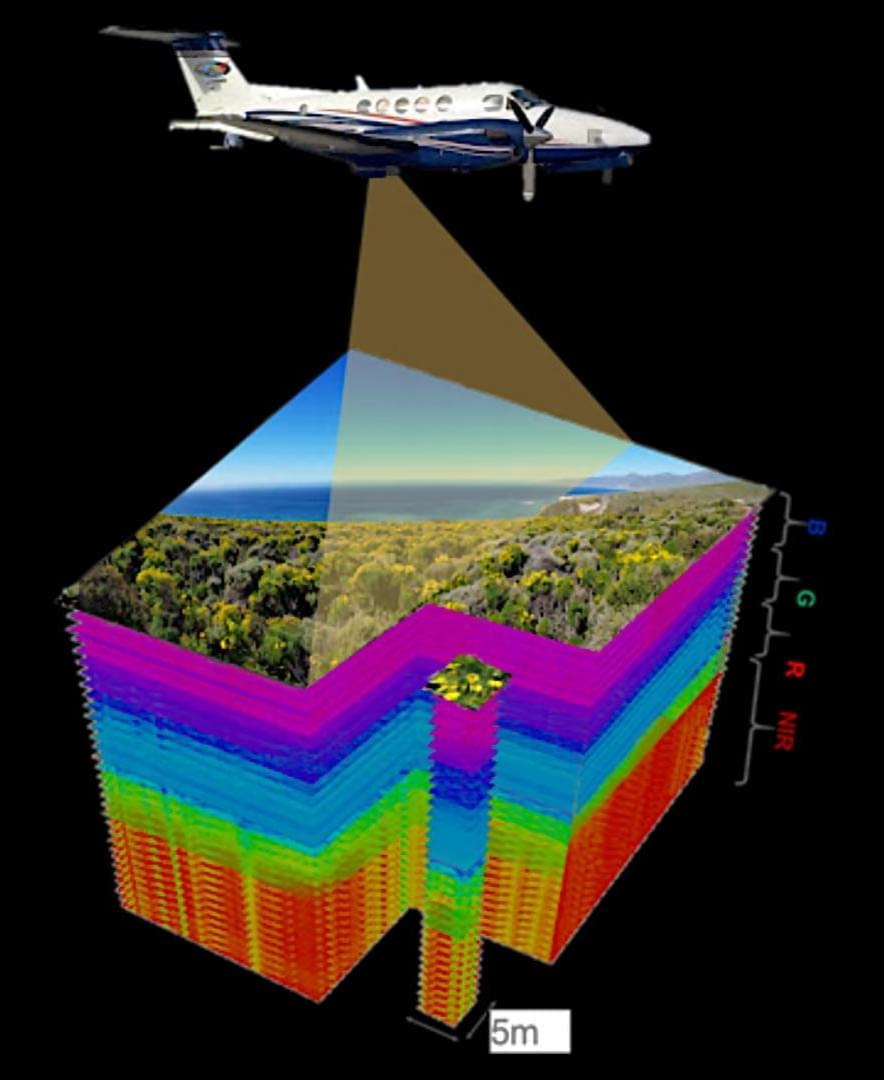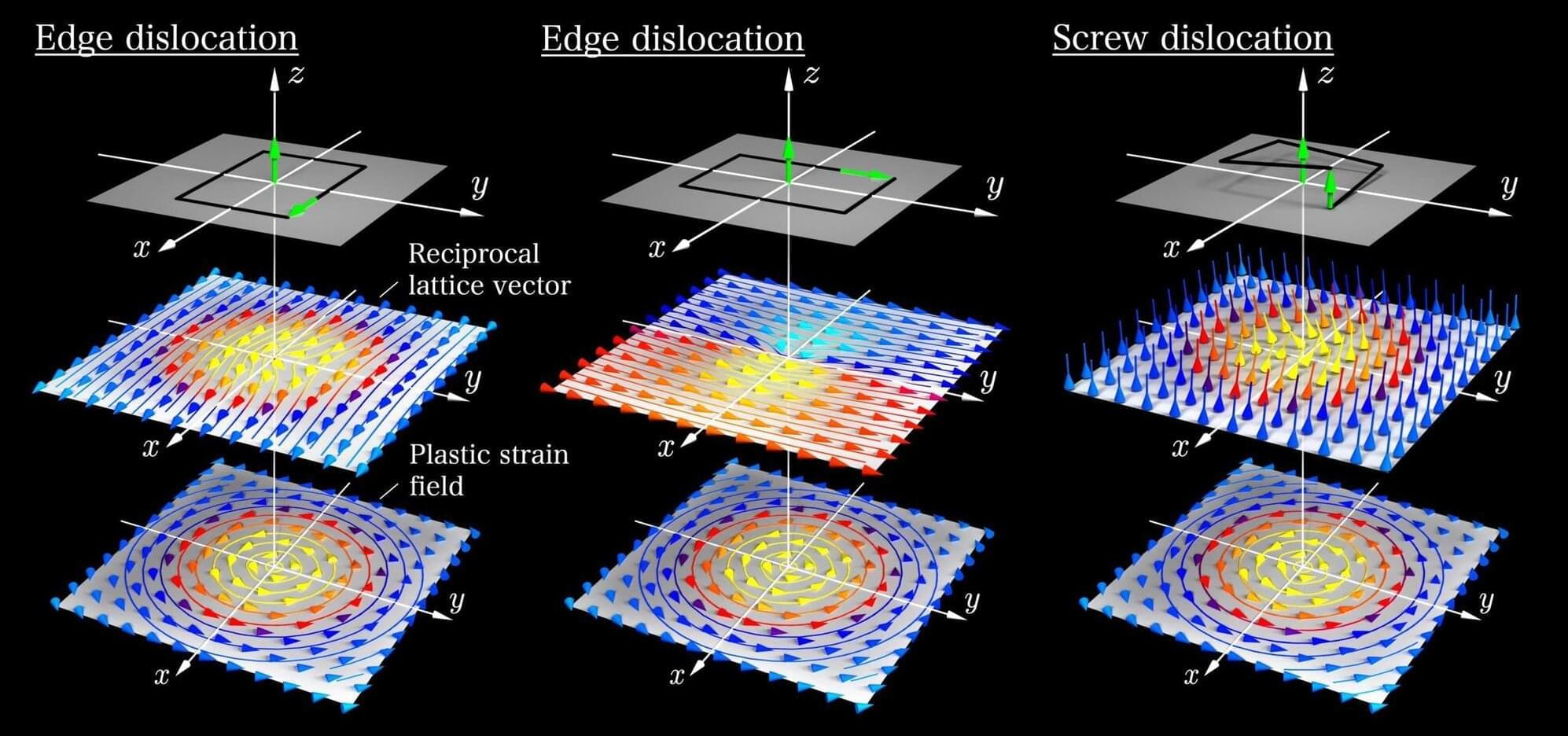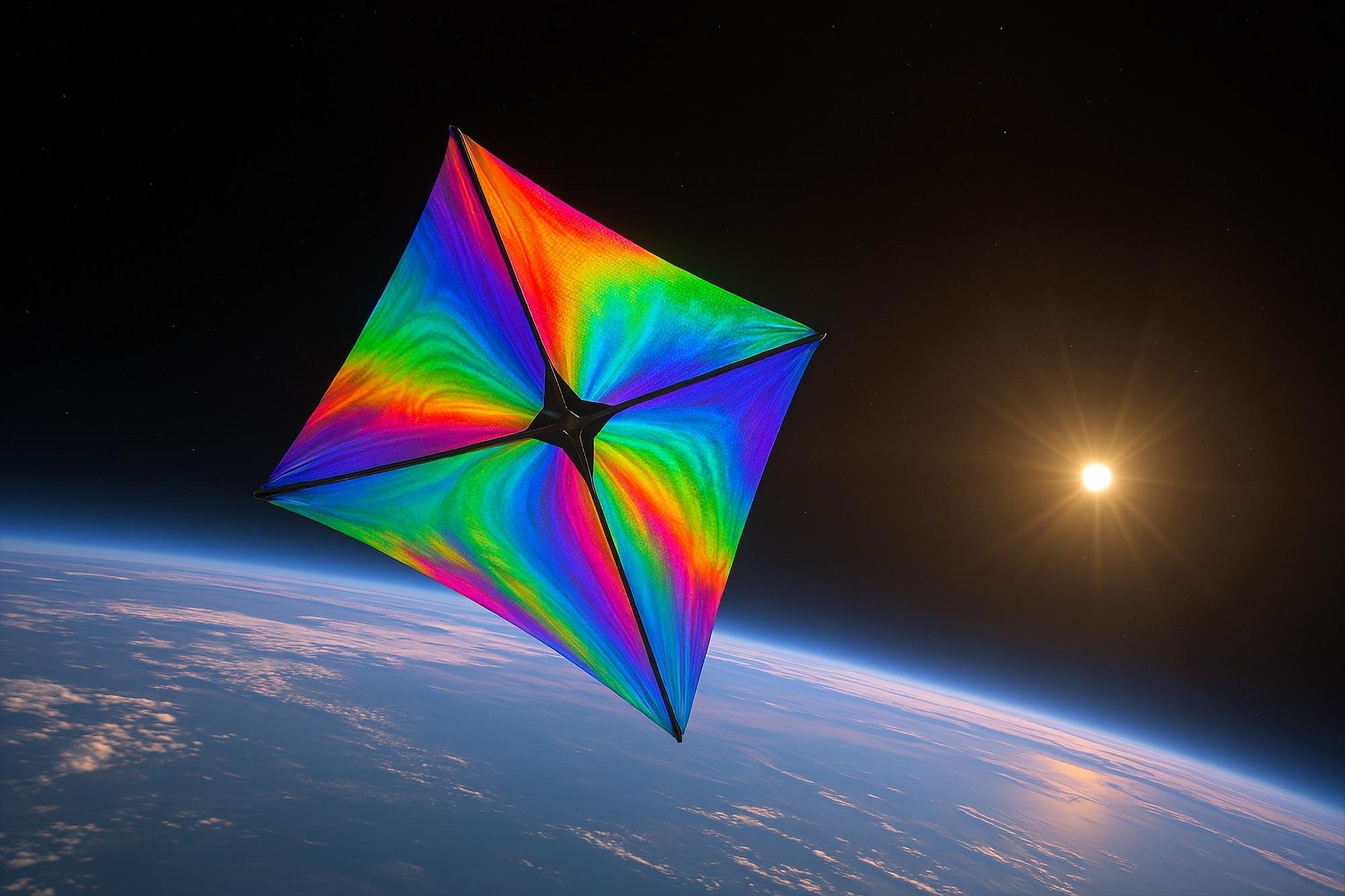Researchers at the Institute of Automation of the Chinese Academy of Sciences have developed a compact, battery-powered brain stimulation device capable of delivering therapeutic magnetic pulses while a person is walking or performing everyday activities.
Repetitive transcranial magnetic stimulation is used to treat conditions such as depression, stroke-related motor impairment, and other neuropsychiatric disorders. It is also used in cognitive and motor function research.
Existing systems need to be plugged into a power supply and have bulky designs meant for stationary use in clinical settings. These limitations prevent stimulation during natural movement, such as standing and walking, making at-home or on-the-go treatments impractical.
